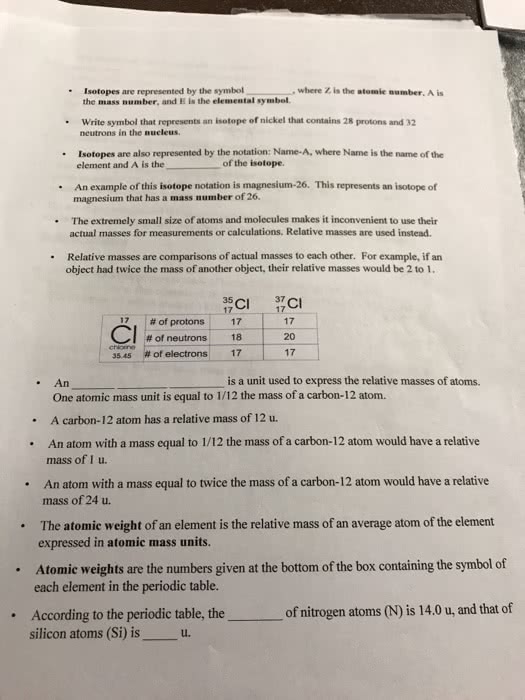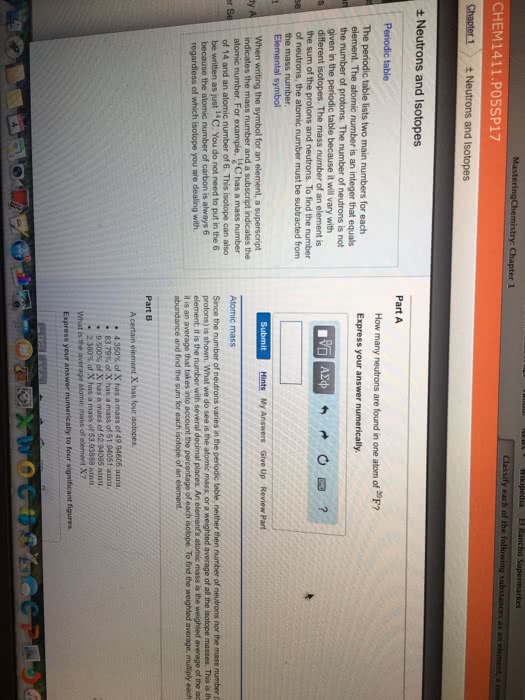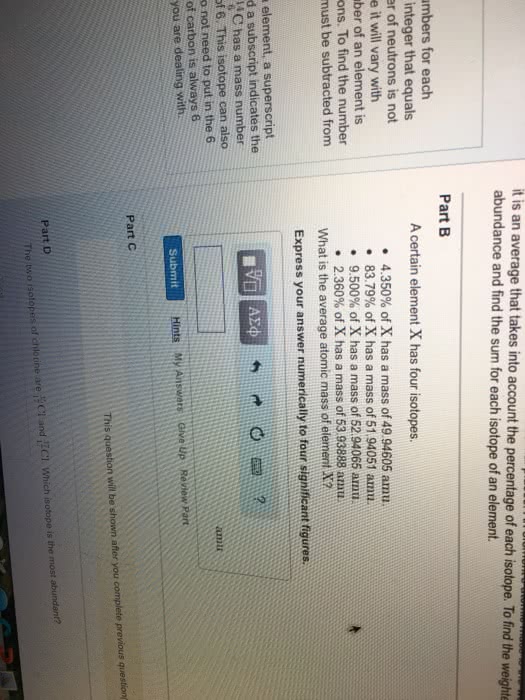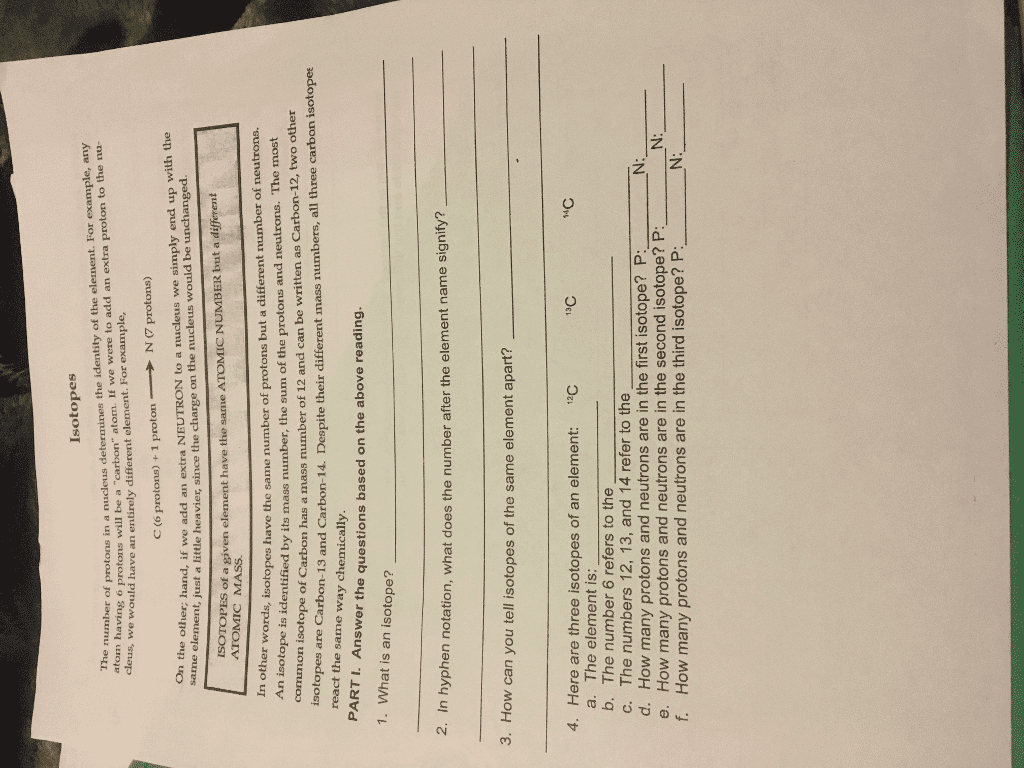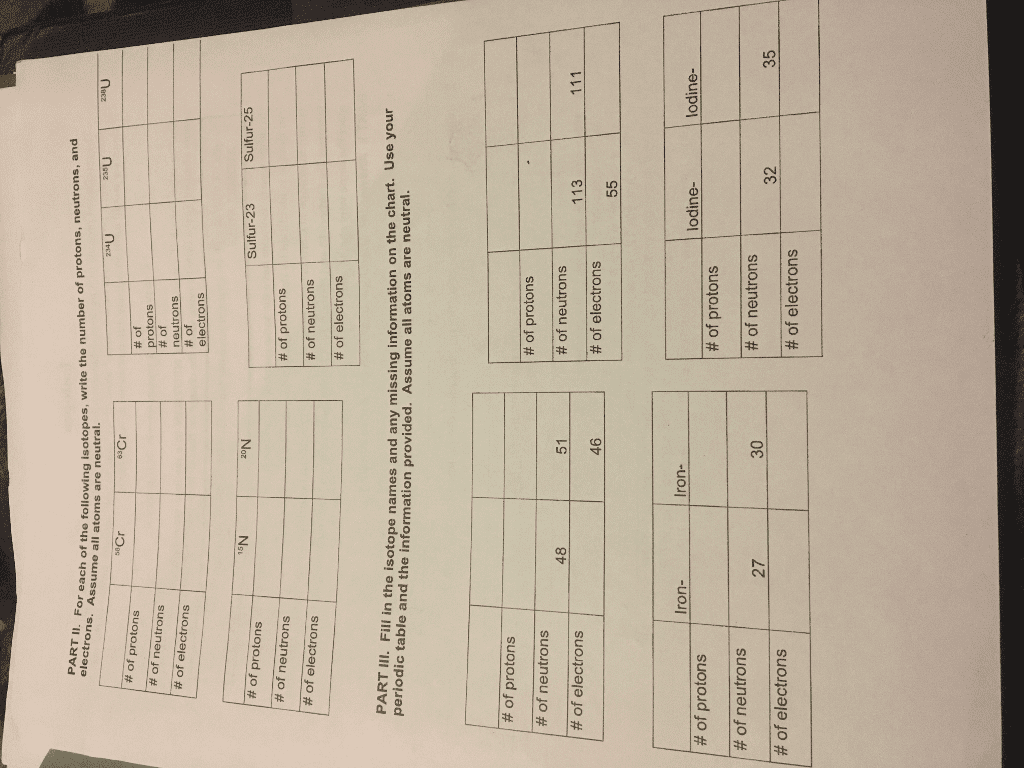Chemistry 1027A/B Study Guide - Lewis Acids And Bases, Stoichiometry, Reagent
Document Summary
Number of protons in an atom is the atomic number. Protons and neutrons make up most of the mass of an atom (mp+=mn, me-=1/200mn) All atoms of the same element have the same number of protons in the nucleus. Atoms with the same number of protons but different number of neutrons are called isotopes. Isotopes have the same atomic number but a different mass number. Isotopic abundance is the % by number of each of the isotopes of an element. Atomic mass assigned to each element on the periodic table is the average value of the masses of all the isotopes of that element (adjusted to show representation of each element) X represents chemical symbol, a represents mass #, z represents atomic # is often used to show both mass # and atomic # The atomic mass standard is based on the mass of c-12, one atomic mass is defined as exactly 1/12 the mass of a c-12 atom.

